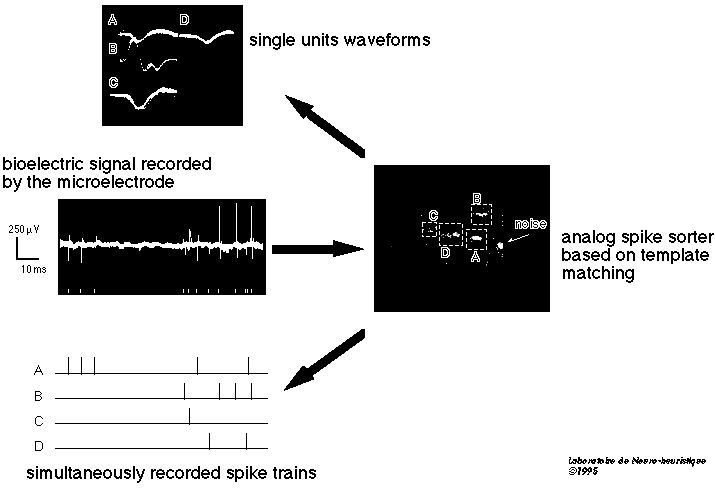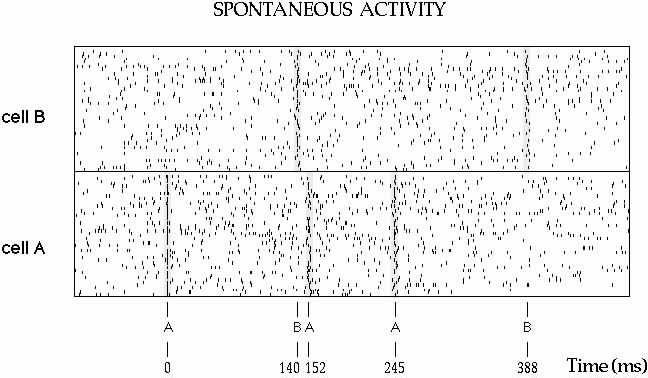
COMPLEX SPATIO-TEMPORAL PATTERNS OF DISCHARGE IN THE CENTRAL NERVOUS SYSTEM

|
COMPLEX SPATIO-TEMPORAL PATTERNS OF DISCHARGE IN THE CENTRAL NERVOUS SYSTEM |
In recent years our laboratory has developed an original hardware and software technique to record simultaneously up to 32 spike trains from multiple microelectrodes independently driven and using template-matching waveshape discriminators.

Crosscorrelation histograms were computed to detect interactions during spontaneous and acoustically evoked activity. The correlograms were computed between units recorded with the same electrode, between units recorded with different electrodes within the same subdivision and between units recorded from distinct subdivisions.
We have developed two efficient algorithms--combinatorial and probabilistic combinatorial methods (CM and PCM)--for estimation of a number of precise patterns of discharges that occur by chance in records of multiple single unit spike trains. The confidence limits estimated by these methods are in good agreement with different sets of simulated test data as well as with the ad hoc method (Abeles and Gerstein, 1988). Both combinatorial methods provided a better accuracy than the bootstrap algorithm and in most cases of non-stationary data PCM provided better estimations than the ad hoc method. Introduction of a jitter for searching patterns with a precision of a few milliseconds and burst filtering may introduce biases in the estimations. Comparison of a new filtering procedure based upon a filtering frequency with previously described schemes of filtering indicates the possibility of using a simple setting which remains accurate over a wide range of parameters.
We are currently extending this approach to a certain number of subcortical and extrathalamic structures involved in the sensory-motor loop activated by decision-making paradigms and auditory stimuli.

This figure illustrates a spatio-temporal firing pattern, designed by [A,B,A,A,B;140,152,245,388] formed by the recurrent activity of two neurons. This pattern is repeated 7 times with a jitter of 3 ms, including two exact repetitions without jitter. In addition, this raster shows the 42 occurrences of the five possible quadruplets generated by a missing spike in the entire pattern. Note that one specific subpattern [A,B,A,A;140,152,245[ repeated 22 times alone. The abscissa full scale is 600 ms.